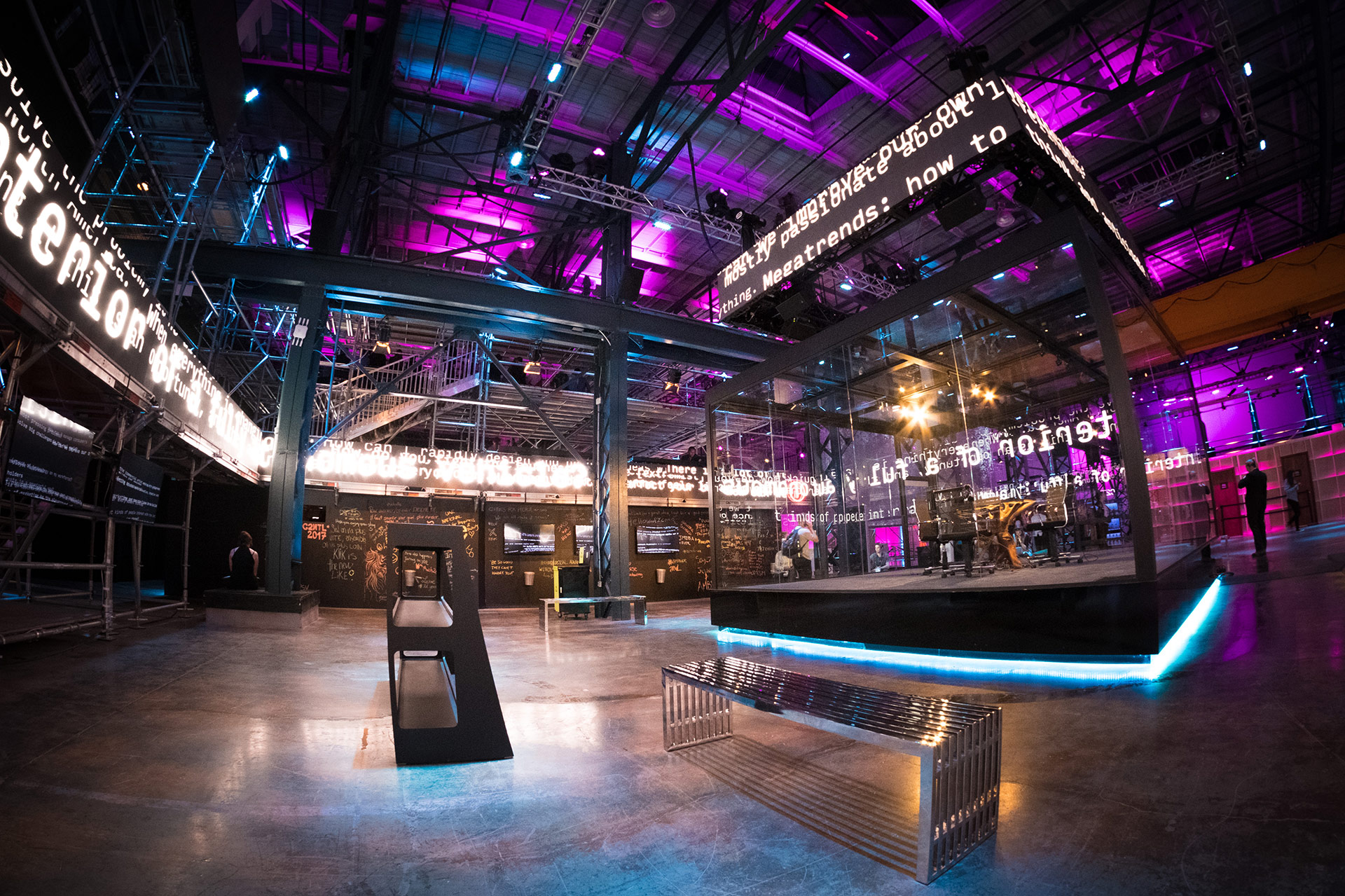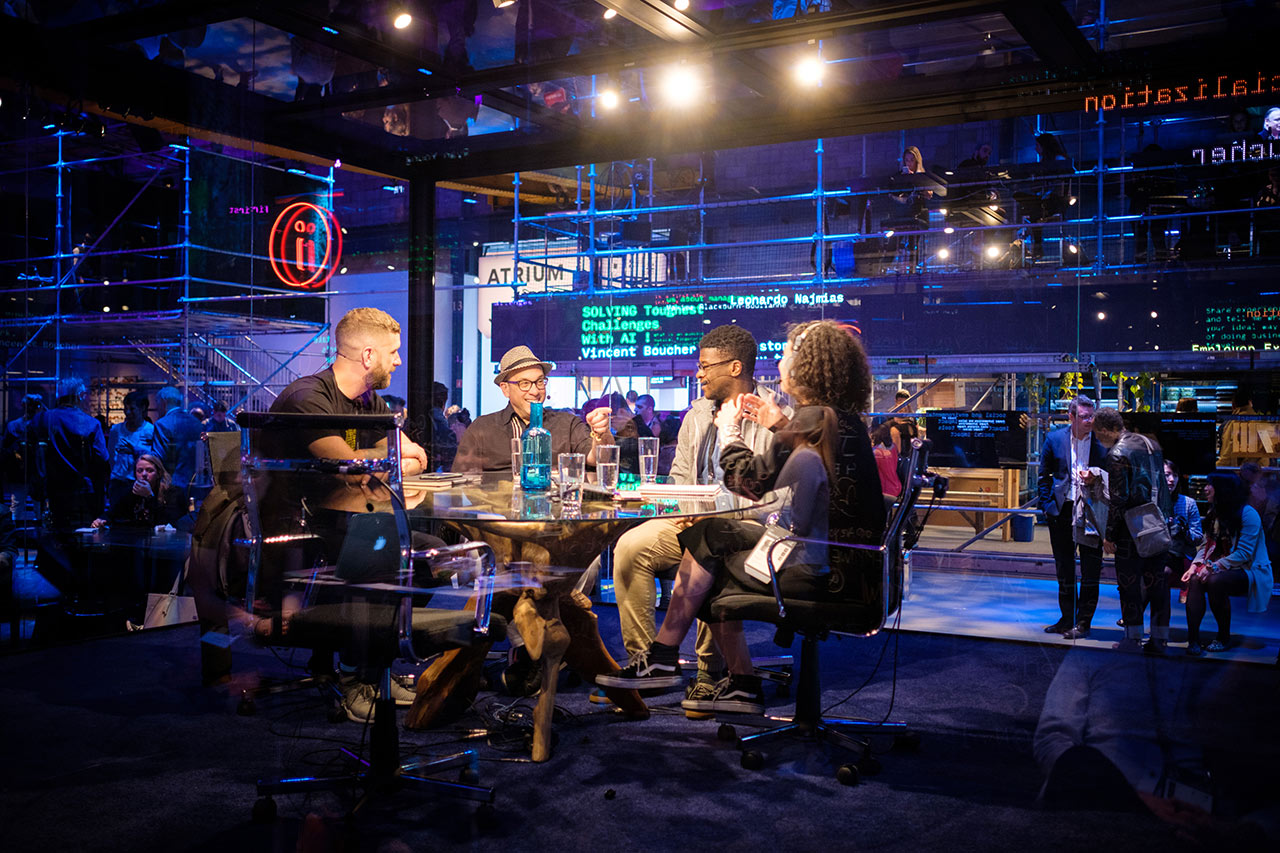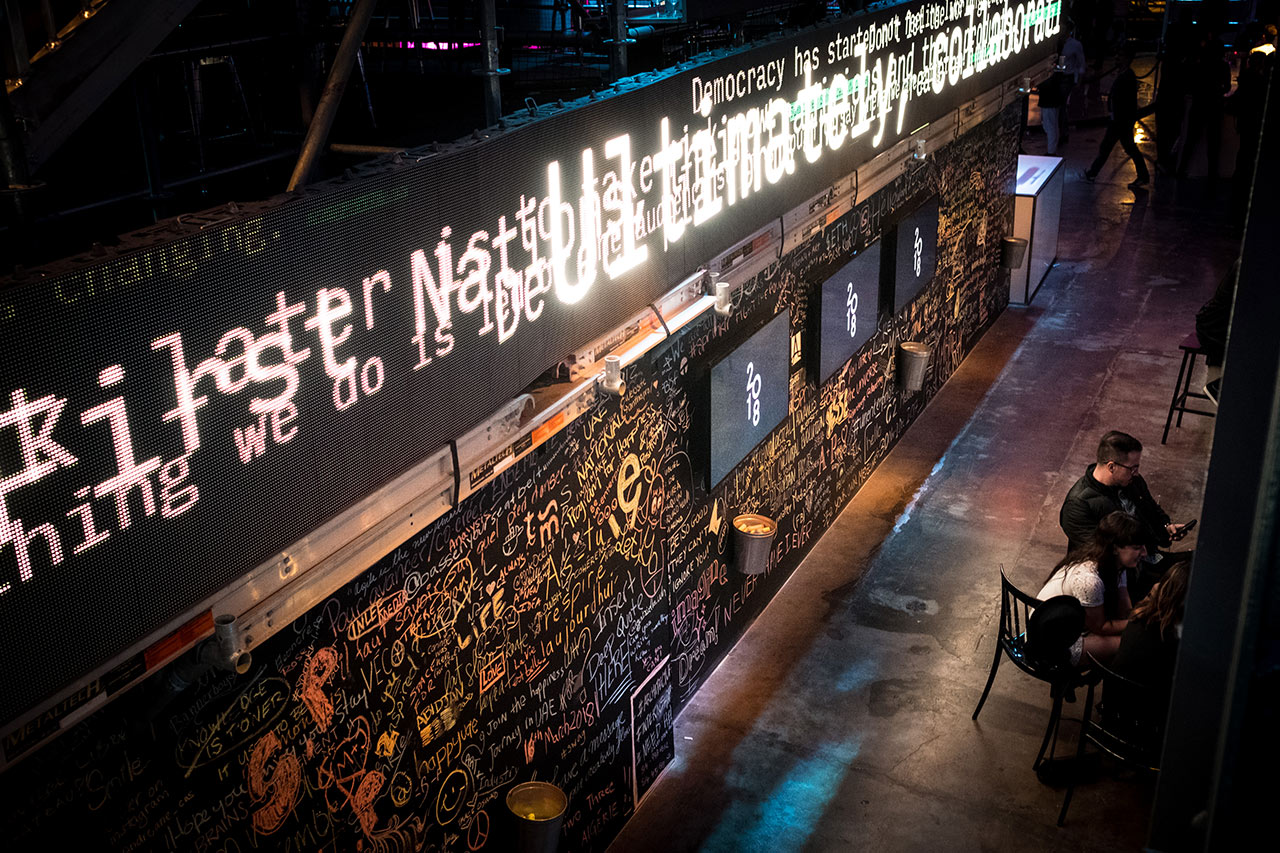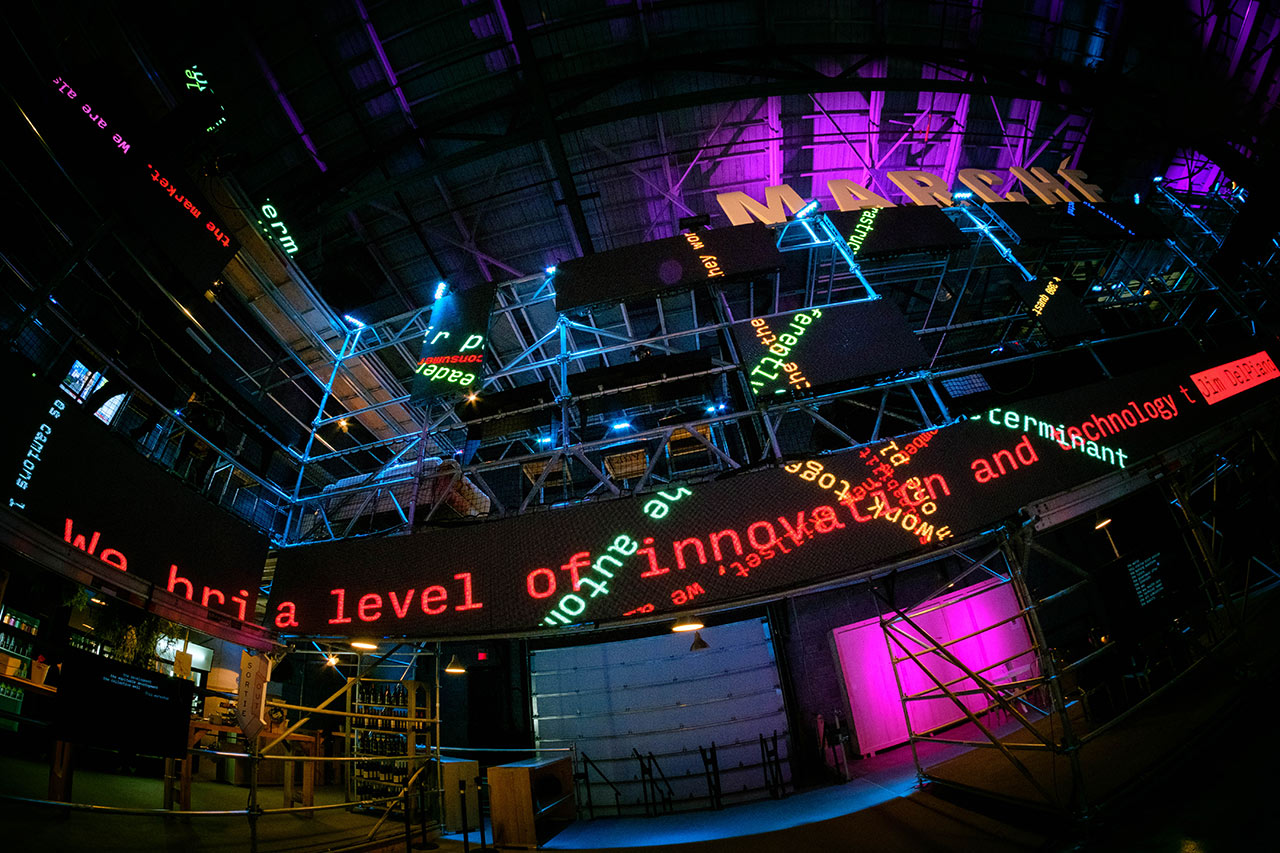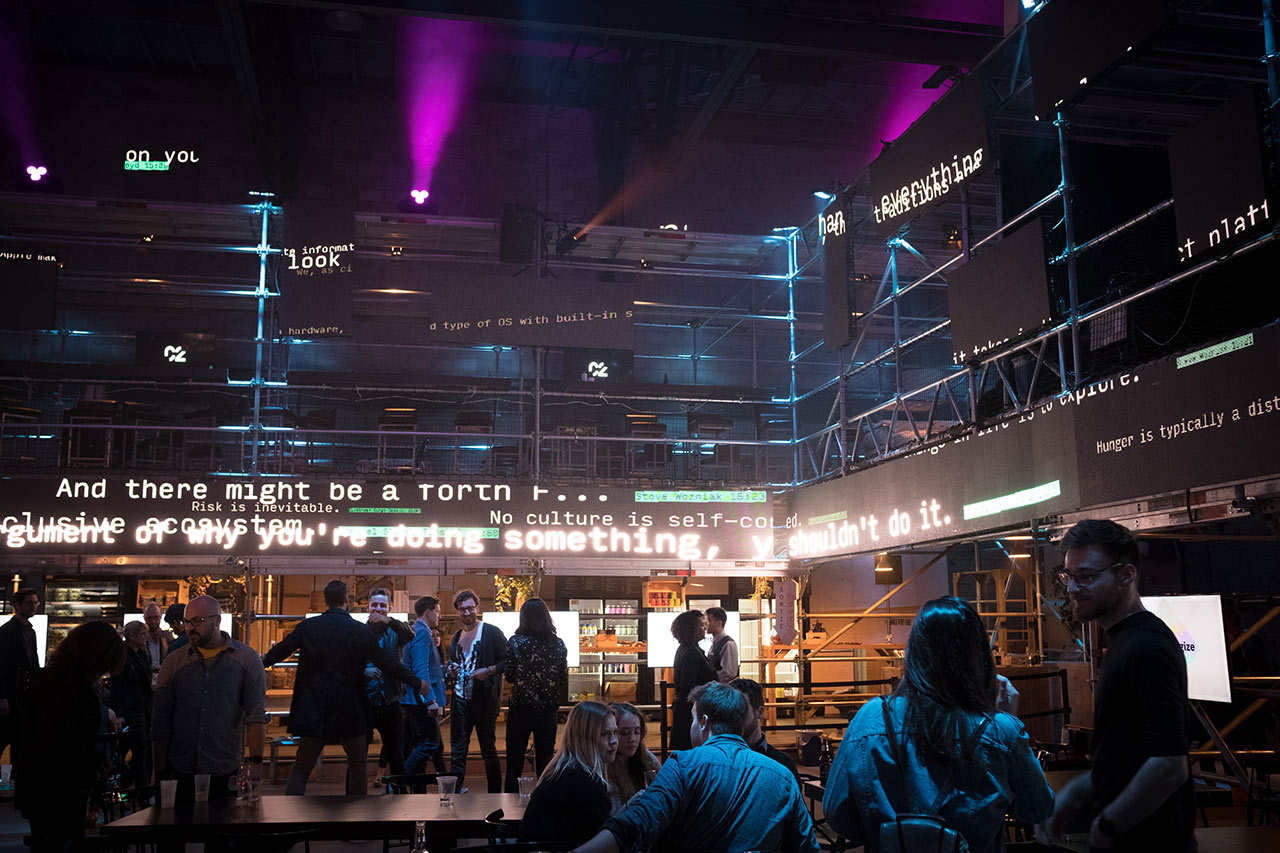C2 Montreal is a three-day event that brings together marketers and creatives to explore trends, opportunities and major shifts on the horizon. Every year, the event drags 5000 attendees to experience and challenge the future of business.

For the conference's 2017 issue, C2 commissioned The New School's Center for Data Arts to create the C2 Brain: a data-based installation that accounts for the many conversations taking place during the event. Conference transcripts, social media posts, and real life conversations are as many data points to be visualized in this 2500 square feet LED installation.
C2 Montreal 2016, main stage

I join CDA's director Ben Rubin and designer Sam Gallison to lead the design and development of real-time graphics for the installation. This work comprises of a week-long preparation phase as well as two 3-day long live-coding performances dedicated to designing visuals based on the conference's on-going content.

